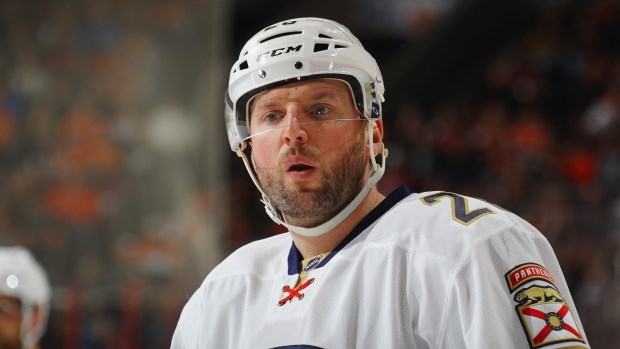There was a distinct theme to the Canucks’ free agent signings this off-season: offensively capable, but defensively suspect.
That was true even before the Canucks signed Thomas Vanek, whose defensive issues are well documented. Sam Gagner and Michael Del Zotto are similarly known more for offence and less for defence. Even Patrick Wiercioch, though not known for putting up points, is better at driving shots in the offensive zone than preventing them in his own end.
This emphasis on offence over defence could lead to some exciting hockey for Canucks fans, but it could be a shock to the system after getting used to the responsible two-way play of Alex Burrows and Jannik Hansen.
The solution for such players is usually to shelter them: protect them as much as possible from tough matchups against the opposition, avoid defensive zone faceoffs, and instead give them cushy matchups, offensive zone faceoffs, and power play time. There’s just one problem: the Canucks have a lot of players they need to shelter.
Apart from the newcomers, the Canucks have several returning players that could use some shelter from the storm. If Nikolay Goldobin and/or Reid Boucher make the lineup, it’ll likely be due to their offensive production, as neither has shown much proclivity defensively. The same may be true for Anton Rodin, though we haven’t seen enough of him to say.
The big one, however, is Bo Horvat. The young centre was billed as a two-way forward when he was drafted and the Canucks expected him to be more of a defensive centre first, with point production to follow. Instead, he’s put up points ahead of schedule, but struggled defensively both at even-strength and on the penalty kill.
If Horvat is going to be the Canucks’ first-line centre for the time being, it would likely be in the Canucks’ best interests to make it a sheltered first line, akin to how Alain Vigneault used the Sedins in their heyday. That means the Sedins themselves would have to take on more defensive responsibility, which, at this point in their careers, is a significant concern.
Where does that leave the forwards? If Horvat is to be sheltered, putting Vanek on his line would make sense: shelter two birds with one stone. That leaves the likes of Gagner, Goldobin, and Boucher. One option would be to put those three players (or whichever wingers make the team ahead of Goldobin and/or Boucher) on a sheltered, scoring fourth line.
That leaves the Sedins, preferably with a defensively-responsible winger like Markus Granlund or Loui Eriksson, and the Sutter line to take on the bulk of the defensive zone faceoffs and tough matchups. Such an assignment wouldn’t leave the Sedins much room to improve on last season offensively, but could enable the Horvat and Gagner lines to provide the bulk of the scoring.
Alternately, the Canucks could try to put a defensively suspect player on a line with better two-way players and hope that can make up for that player’s defensive struggles.. For instance, Vanek with Sutter and Eriksson, Granlund could play with Horvat, and Gagner could line up with the Sedins.
The problem is that defensive systems rely on every player on the ice to do their part: pick up the right opponent on the backcheck, cover the right player as they rotate on the cycle, etc. One player missing an assignment can throw the entire thing out of whack.
And it’s vital that the Canucks do find a way to shelter someone like Vanek. If (or when) the Canucks are out of the playoff picture, Vanek will be one of their best trade pieces. Putting him in a position to succeed and put up points on what could still be a team that struggles to score will help determine the return at the trade deadline.



